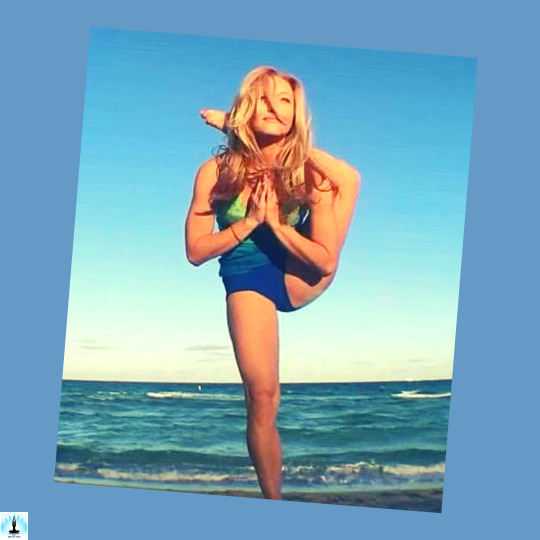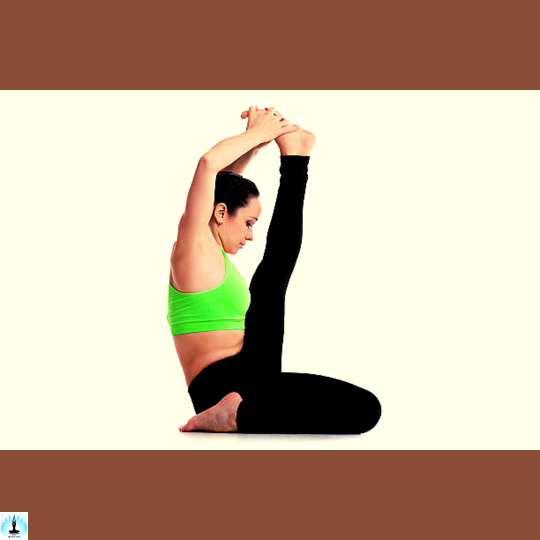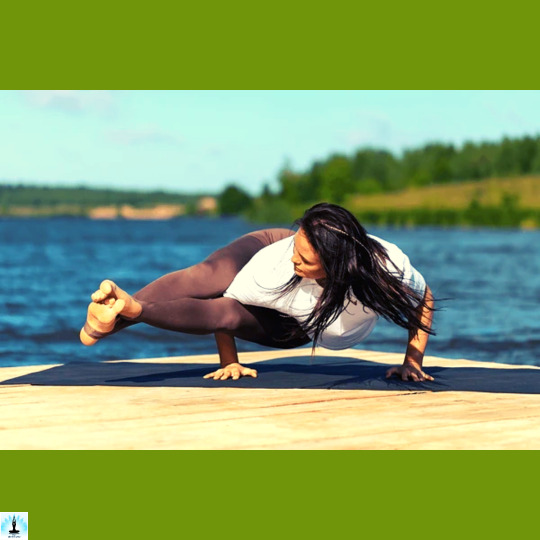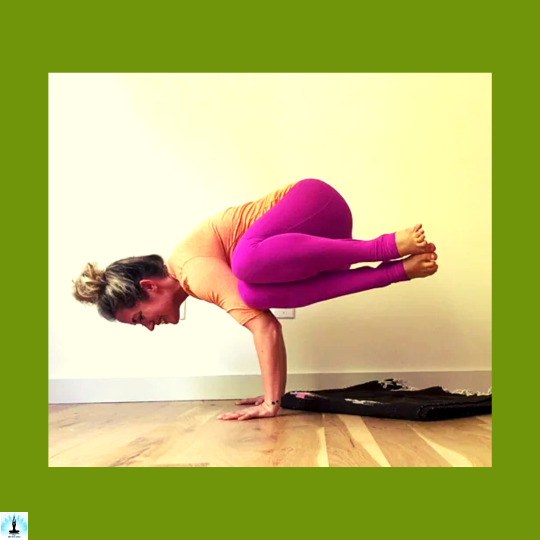Don't wanna be here? Send us removal request.
Text

Sheetali Pranayama (Cooling Breath)
Roll your tongue into a tube or purse your lips, then inhale through the mouth. Exhale through the nose. This breath cools the body, reducing stress and tension.
#pranayama#yoga#meditation#asana#yogateacher#yogapractice#hathayoga#yogainspiration#mindfulness#yogalife#love#breathe#breathwork#prana#namaste#yogaeverydamnday#yogalove#yogaeveryday#yogi#comrade#yogaonline#yogaeverywhere#vinyasa#breath#breathing
0 notes
Text

Cat-Cow Stretch (Marjaryasana-Bitilasana)
Begin on your hands and knees, moving between arching your back upward (cow) and rounding it downward (cat). This gentle flow improves spine flexibility and releases tension in the neck and upper back.
#catcowpose#yoga#yogapractice#catcow#stretching#downwarddog#catcowstretch#yogateacher#fitness#yogaathome#mobility#yogaforbeginners#cobrapose#yogaeveryday#hathayoga
1 note
·
View note
Text

Yoga Poses for Headache Relief
Forward Fold (Uttanasana):
Stand with feet hip-width apart and hinge at the hips to fold forward, reaching towards the floor or your shins. Forward Fold encourages blood flow to the head, relieves tension in the neck, and promotes relaxation.
#yoga#fitness#meditation#yogapractice#yogainspiration#love#yogalife#yogaeverydamnday#yogi#mindfulness#yogateacher#yogalove#workout#gym#yogaeveryday#motivation#pilates#namaste#health#wellness#yogagirl#yogaeverywhere#nature#yogachallenge#healthylifestyle#fitnessmotivation#yogapose#healing#fit#peace
0 notes
Text

Yoga Poses for Headache Relief
Child's Pose (Balasana):
Start in a kneeling position, then lower your torso forward, resting your forehead on the mat with your arms extended or relaxed by your sides. Child's Pose promotes relaxation, stretches the spine, and helps release tension in the neck and shoulders.
#adho mukha svanasana#yogabun#yoga at home#home yoga#yoga#yogi#yogini#yoga inspiration#yoga motivation#yoga pose#yoga poses#asana#asanas#yoga posture#motivation#inspiration#inspire#inspirational#fitness#health and fitness#manifesting#manifest#manifestation#Aesthetic#yoga aesthetic#fitness aesthetic
0 notes
Text

Which Chakra is Activated by Practicing Durvasasana?
Located at the center of the chest, the Anahata Chakra is related with love, compassion, balance, and emotional well-being. The deep backbend in Durvasasana opens the chest and heart region, creating a profound stretch across the front body.
This activation of the Heart Chakra is thought to facilitate a sense of openness, self-love, and interconnectedness.
#spirit#enlightenment#positivevibes#universe#bhfyp#chakras#spiritualjourney#hope#astrology#selfcare#witch#spiritualgrowth#magic#gratitude#religion#meditate
0 notes
Text

Top Benefits of Durvasasana
Spinal Flexibility:
Durvasasana improves flexibility in the spine, particularly in the thoracic and lumbar regions, enhancing overall spinal mobility.
Shoulder Opening:
The pose opens and stretches the shoulders, releasing tension and improving range of motion in the shoulder joints.
Heart Opening:
Durvasasana is a deep backbend that expands the chest, creating an intense heart-opening effect. This can cultivate a sense of emotional openness and vulnerability
Respiratory Benefits:
The expansive chest in Durvasasana can improve respiratory function, enhancing lung capacity and promoting deeper, more conscious breathing.
Strengthening Core Muscles:
Holding the pose requires engagement of the core muscles, contributing to abdominal strength and stability.
Improved Posture:
Regular practice of Durvasasana encourages an upright and open posture, counteracting the effects of prolonged sitting and slouching.
Improved Circulation:
The backbend facilitates improved circulation throughout the body, promoting better blood flow and overall cardiovascular health.
Balancing Energies:
The pose is believed to balance the energies within the body, fostering a harmonious flow of prana (life force energy) throughout the subtle energy channels.
Mind-Body Connection:
Durvasasana encourages a profound mind-body connection, as practitioners navigate the physical challenge while cultivating a sense of inner awareness and presence.
#believe#love#faith#life#instagood#motivation#success#hope#trust#believeinyourself#god#dreams#peace#inspiration#wisdom#glaub#spiritual#quotes#inspire#pray#truth#nevergiveup#like#follow#dream#heart#happy#happiness#work#goals
0 notes
Text

The Yogic Philosophy of The Durvasasana
Durvasasana, or Sage Durvasa Pose, represents the yogic philosophy by symbolizing the balance between strength and flexibility. Named after the fiery sage Durvasa, the pose inspires practitioners to nurture resilience and grace in the face of challenges. The deep backbend signifies the ability to bend without breaking, mirroring the sage's legendary temperament.
#india#instagram#love#photography#instagood#mumbai#kerala#bhfyp#follow#nature#indian#travel#delhi#likeforlikes#like#fashion#photooftheday#memes#trending
0 notes
Text
Named after the fiery sage Durvasa, the pose inspires practitioners to nurture resilience and grace in the face of challenges. The deep backbend signifies the ability to bend without breaking, mirroring the sage's legendary temperament.
#happiness#love#happy#life#motivation#instagood#selflove#inspiration#positivevibes#quotes#instagram#lifestyle#believe#loveyourself#smile#success#mindset#like#positivity#goals#bhfyp
0 notes
Text

Advance Variations of Kraunchasana
Eka Pada Kraunchasana (One-Legged Heron Pose):
Eka Pada Kraunchasana involves extending one leg straight while holding the other leg in a bent position, resembling a one-legged variation of Kraunchasana.
This variation intensifies the stretch in the extended leg and requires increased strength and balance in the supporting leg, adding an advanced element to the pose.
#houston#texas#houstontx#htx#htown#dallas#atlanta#explorepage#miami#houstontexas#newyork#losangeles#houstonhairstylist#explore#chicago#music#love#california#austin#houstonnightlife#s#hiphop#sanantonio#florida#houstonevents#fashion#lasvegas#houstonfood#usa#viral
0 notes
Text

Advance Variations of Kraunchasana
Parivrtta Kraunchasana (Revolved Heron Pose):
In this advanced variation, practitioners add a twist to Kraunchasana by rotating the torso towards the bent knee.
The twist deepens the stretch in the spine, increases the challenge to the core muscles, and further enhances the pose's overall complexity.
#life#love#instagood#instagram#happy#like#follow#lifestyle#photography#motivation#photooftheday#art#smile#bhfyp
0 notes
Text

Which Chakra is Activated by Practicing Kraunchasana?
Located in the lower abdomen, the Svadhisthana Chakra is associated with creativity, sensuality, and emotional well-being.
Kraunchasana, with its focus on the lower back, hips, and pelvis, stimulates and balances the energy in this chakra. The dynamic engagement of the pelvic region in the pose is believed to enhance the flow of vital energy within the Svadhisthana Chakra, promoting a sense of emotional fluidity, creativity, and a harmonious connection with one's sensuous aspects of life.
#svadhisthana#chakras#yoga#sacralchakra#yogini#chakramandala#sacrum#rainbowbody#pelvis#secondchakra#hipjoint#coxa#pelvicfloor
1 note
·
View note
Text

How to Perform Kraunchasana? | Step-by-Step Instructions of Kraunchasana
Starting Position:
Begin in a seated position with your legs extended in front of you.
Bend One Knee:
Bend your right knee and bring the foot towards the pelvis, placing the sole of the foot on the inner thigh.
Straighten the Leg:
Extend your left leg straight in front of you, keeping the foot flexed.
Hold the Foot:
Reach forward with both hands to hold the left foot. You can use a yoga strap or belt if reaching the foot is challenging.
Straighten the Spine:
Lengthen your spine, lifting your chest and rolling your shoulders back. Keep your gaze forward.
Engage the Core:
Engage your core muscles to maintain stability. This also supports the lower back.
Lift the Leg:
As you exhale, lift your left leg off the ground, keeping it straight. Maintain a slight bend in the knee if needed.
Hold and Breathe:
Hold the lifted position for a few breaths, focusing on balance and extending through the lifted leg.
Release and Switch Sides:
Gently release the lifted leg back to the floor and switch sides, repeating the steps with the opposite leg.
Ensure Alignment:
Check that your hips remain level and squared to the front. The extended leg should be in line with your hip.
Maintain a Steady Breath:
Throughout the pose, maintain a steady and controlled breath. Avoid holding your breath.
Exit the Pose Mindfully:
To release, lower the lifted leg to the floor and return to a seated position. Take a moment to observe the effects of the pose.
#love#spiritual#meditation#spiritualawakening#healing#peace#selflove#mindfulness#life#yoga#awakening#consciousness#motivation
0 notes
Text
Kraunchasana, or Heron Pose, embodies the yogic philosophy by symbolizing the qualities of balance, poise, and focused awareness. The pose draws inspiration from the graceful heron, reflecting the harmonious integration of strength and elegance.
#yoga#meditation#kriyayoga#paramahansayogananda#selfrealizationfellowship#yogi#buddha#osho#o#kriya#babaji#sadhguru#guru#spirituality
0 notes
Text

Follow-up Poses of Koundinyasana
Ashtavakrasana (Eight-Angle Pose):
Following Koundinyasana, Ashtavakrasana is a natural progression that further challenges arm strength and balance. This advanced arm balance involves the crossing of legs and arms in a way that requires precision and control.
#peace#love#life#nature#happiness#art#photography#motivation#meditation#believe#faith#inspiration#happy#hope#god#selflove#quotes#spirituality#beautiful
1 note
·
View note
Text

Preparatory Poses of Koundinyasana
Side Crow Pose (Parsva Bakasana):
Side Crow Pose, or Parsva Bakasana, is another beneficial pose to practice before Koundinyasana. This variation involves twisting the torso while maintaining the arm balance, helping to enhance core engagement and balance preparation.
#universe#bhfyp#chakras#spiritualjourney#hope#astrology#selfcare#witch#spiritualgrowth#magic#gratitude#religion#meditate
1 note
·
View note
Text

Preparatory Poses of Koundinyasana
Crow Pose (Bakasana):
Crow Pose, or Bakasana, is an excellent preparatory pose before attempting Koundinyasana. It helps build arm strength, balance, and familiarity with the sensation of balancing on the hands.
#buddha#buddhism#meditation#buddhist#love#buddhaquotes#peace#zen#yoga#india#jaybhim#dharma#spiritual#spirituality#art
2 notes
·
View notes
Text

Koundinyasana II (Flying Splits Koundinyasana):
Koundinyasana II combines the arm balance with a challenging split position. In this variation, one leg extends straight back while the other extends forward, resembling a flying split. Achieving this variation demands advanced flexibility in the hips and hamstrings, along with refined arm balance skills.
#canada#usa#toronto#ontario#australia#uk#love#photography#vancouver#nature#london#india#montreal#germany#newyork#travel
1 note
·
View note